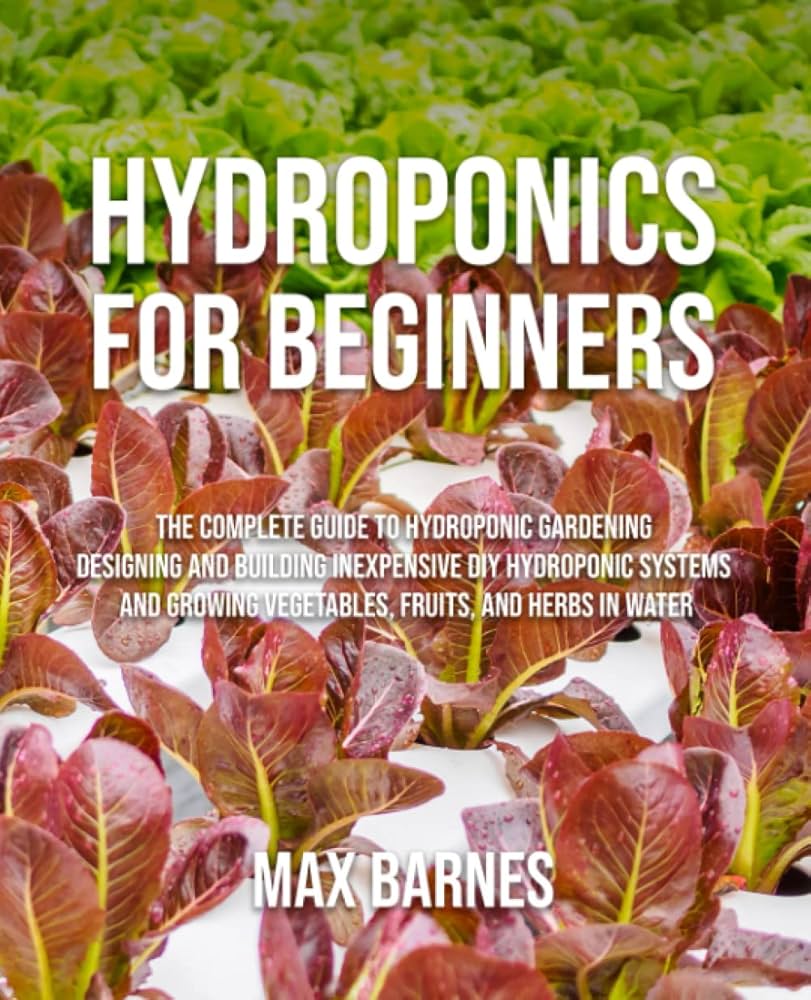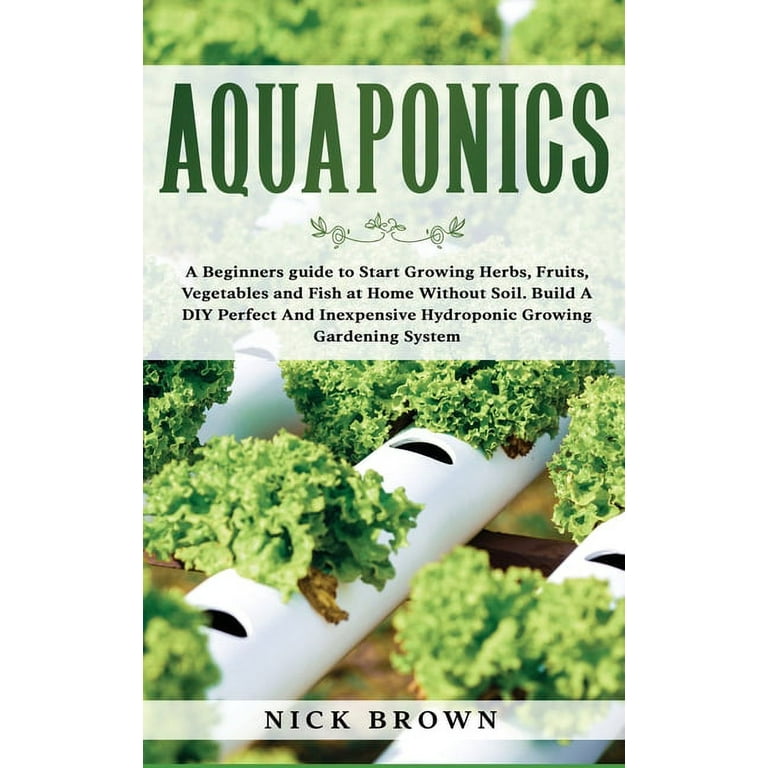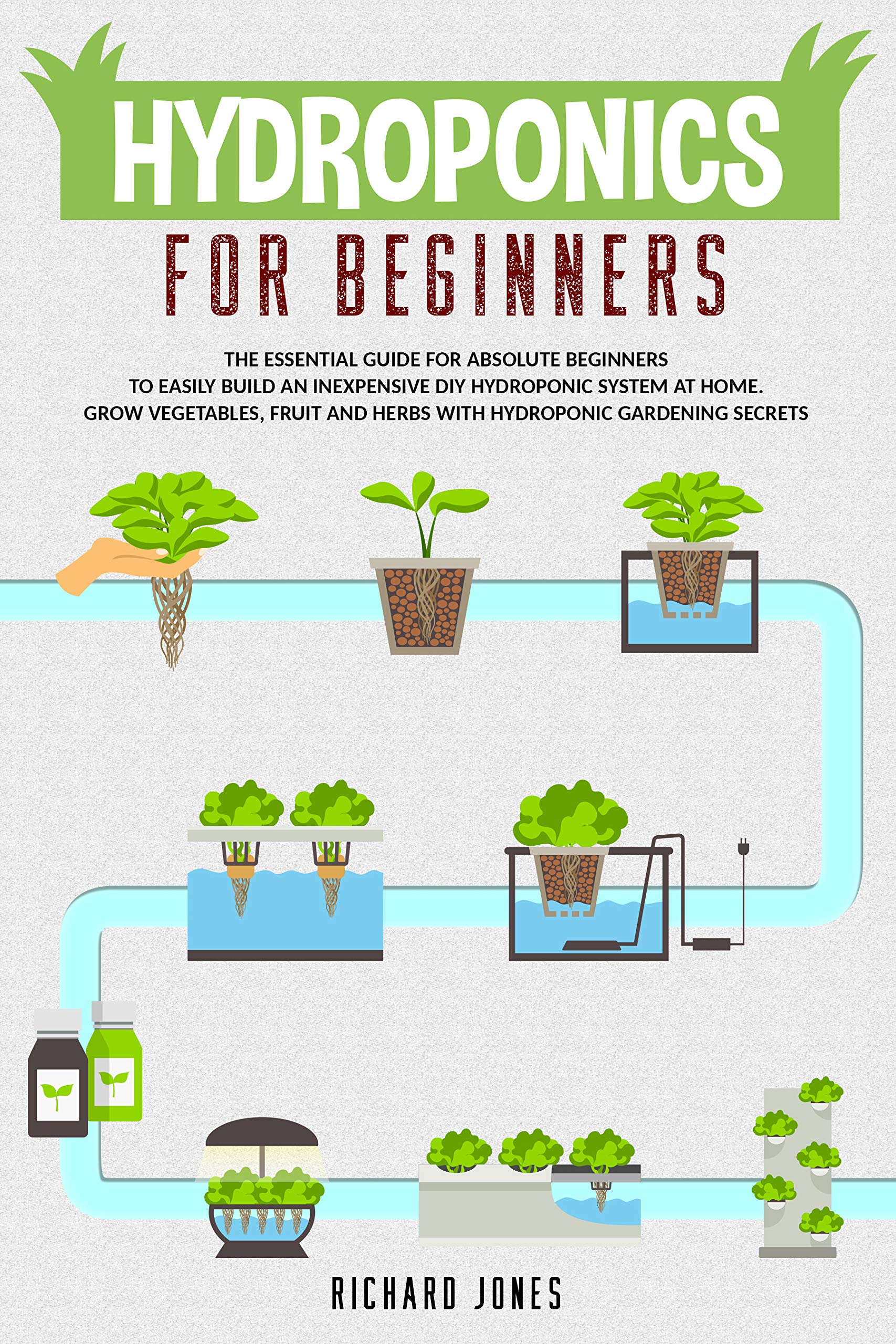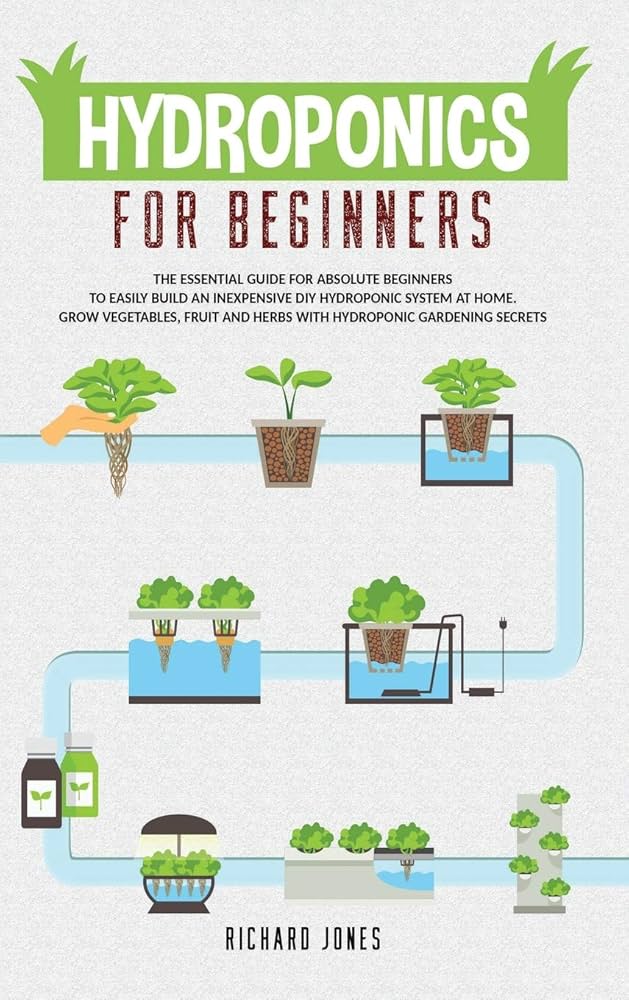Imagine harvesting fresh, vibrant vegetables right from your living room, no soil required. A DIY hydroponic grow system offers you this incredible opportunity, transforming small spaces into lush, productive gardens.
Whether you’re a seasoned gardener or a curious beginner, building your own hydroponic system can be surprisingly simple and extremely rewarding. Dive into the world of hydroponics, where you can take control of your food supply, reduce your grocery bills, and enjoy healthier, tastier produce.
This guide will walk you through each step, making it easy for you to get started and grow your own thriving garden. Ready to unlock the secrets of soil-free gardening and revolutionize the way you grow plants? Let’s dig in and discover how you can create your very own hydroponic paradise!

Hydroponics Basics
Plants grow without soil using hydroponics. They get nutrients directly from water. This system uses less water than traditional gardening. Plants grow faster. They also produce more. Hydroponics is great for small spaces. You can grow plants indoors. This means fresh veggies all year. It’s also fun and educational. Kids love watching plants grow.
Hydroponics can be more efficientthan soil gardening. It uses less water. Plants grow faster. They need less space. No soil means fewer pests. This reduces plant diseases. Nutrients go straight to plants. This leads to better growth. You can grow plants inside. Even in winter. Fresh veggies all year long. It’s fun to watch them grow.
Choosing The Right System
Hydroponic systems are ways to grow plants without soil. They use water with nutrients. There are different typesof systems. Each has its own benefits. The wick systemis simple. It uses a wick to move water to plants. The water culture systemfloats plants on water. It is great for lettuce. The ebb and flow systemfloods and drains the water. It helps plants grow fast.
Choose a system that fits your space. Some systems need more room. Others need less. Consider the cost. Some systems are cheap. Others are expensive. Think about the time. Some systems need daily care. Others need less. Look at your plants. Some plants grow better in certain systems. Pick the best system for your plants.
Essential Materials And Tools
Create your hydroponic system with simple supplies. Start with a strong container. It holds the water and plants. Use PVC pipes for water flow. Get a water pump. It moves water to the plants. Net pots are essential. They hold the plants in place. Use a grow medium like clay pebbles. It supports the plant roots. Ensure you have a light source. Plants need light to grow. A timer helps control the light and water schedule. Gather these supplies to build your system.
Plants need food to grow. Use a nutrient solution. It is like plant food. Mix it with water. Follow the instructions on the package. Different plants need different nutrients. Ensure you have the right mix. Test the pH level of the water. It should be balanced for plant growth. A pH meter helps check this. Keep the nutrients fresh. Plants grow best with fresh solutions.

Step-by-step Setup Guide
Start with a strong base. Use a sturdy frame. This holds your system. PVC pipes are a good choice. They are light and strong. Cut them to the right size. Make sure they fit well. Connect with joints and glue. Let it dry. Now, your frame is ready.
The water pump is next. It moves water to plants. Place it at the bottom. Connect tubing to the pump. Make sure it reaches all plants. Use clamps to hold the tubing. Fill the tank with water. Turn on the pump. Check if water flows well.
Now for the plants. Place them in net pots. Fill pots with grow media. This holds the roots. Add nutrients to the water. They help plants grow. Mix well. Put the pots in the system. Make sure the roots touch water. Your system is ready!
Maintenance Tips
Keep an eye on the nutrient levels in your hydroponic system. Plants need the right mix to grow strong. Use a nutrient meter to check the levels regularly. Too much or too little can harm your plants. Change the water and nutrients once a week. This keeps everything fresh. Make sure to follow the nutrient solution instructions. Different plants need different nutrients.
Light and temperature are important for plant growth. Use grow lights to provide the right amount of light. Keep lights on for about 12 to 16 hours a day. Too much light can burn the plants. The right temperature is also important. Most plants like temperatures between 65°F and 75°F. Use a thermometer to check the temperature. If it’s too hot or cold, adjust as needed.

Troubleshooting Common Issues
Facing challenges with your DIY hydroponic grow system? Learn to fix common issues like nutrient imbalances, pH fluctuations, and equipment malfunctions. Ensure healthy plant growth by troubleshooting effectively.
Identifying Plant Diseases
Spotting plant diseases early is important. Look for yellowing leaves or spots. These are signs of trouble. Sometimes, leaves may wilt or curl. This can mean a disease is present. Check roots too. Healthy roots are white and firm. Brown or mushy roots signal problems. Remove sick plants quickly. This stops the spread of disease.
Solving Water Quality Problems
Water quality affects plant health. Test the pH level regularly. It should be around 5.5 to 6.5. Too high or low pH harms plants. Check for chlorine in the water. Chlorine can damage plant roots. Use a carbon filter to remove it. Ensure the water is clear. Cloudy water may mean bacteria. Clean the system to keep water pure.
Expanding Your System
Explore the world of DIY hydroponics with this grow system guide. Learn how to expand your setup efficiently. Cultivate fresh produce at home with simple, easy-to-follow instructions.
Scaling Up For More Plants
Adding more plants means you need more space. Use extra trays or shelves. Ensure each plant gets enough light. Check the water level often. Plants need enough water to grow well. More plants can mean more work. But with planning, it’s easy to manage.
Incorporating Automation
Automation makes growing easier. Timers help with lighting and watering. Sensors can check water levels. Use alarms to alert you of problems. Automated systems save time. They help plants grow well. Remember, machines need care too. Check them regularly to ensure they work well.
Success Stories And Inspiration
Dive into DIY hydroponic grow system success stories for practical inspiration. Discover how enthusiasts transform small spaces into thriving gardens. Learn tips to nurture plants efficiently without soil, using water-based techniques.
Case Studies Of Home Growers
Many people grow plants at home using hydroponics. One grower named Sam started in his small apartment. He used a simple setup. Just a few pipes and a water pump. Sam grew fresh herbs for his kitchen. He loved the taste. Another grower, Lisa, made a vertical garden. It used little space. Her strawberries were juicy and sweet. Both Sam and Lisa found joy in growing their own food. They shared their tips with friends. Now, their friends also enjoy fresh produce at home.
Innovative Hydroponic Designs
Some people create new designs for hydroponics. One design uses old bottles. It saves money and helps the planet. Another design fits in small spaces. It is perfect for city homes. These designs make it easy for anyone to start. Beginners can grow lettuce, herbs, or even flowers. Many people enjoy trying these new ideas. It makes growing fun and exciting.
Frequently Asked Questions
What Is A Hydroponic Grow System?
A hydroponic grow system is a method of growing plants without soil. It uses nutrient-rich water solutions to feed plants directly. This system is efficient and conserves water. Ideal for indoor gardening, it allows year-round cultivation. Hydroponics can be simple DIY projects or complex commercial setups.
Why Choose Diy Hydroponics Over Traditional Gardening?
DIY hydroponics offers several benefits over traditional gardening. It saves space and uses less water. Plants grow faster and healthier due to direct nutrient access. It’s perfect for urban environments with limited space. Plus, hydroponics reduces pest risks and soil-related issues, making gardening easier.
How Do I Start A Diy Hydroponic System?
Starting a DIY hydroponic system involves selecting a design and gathering materials. Choose a system type: NFT, DWC, or wick systems. Gather containers, water pumps, and nutrient solutions. Assemble your system following guides or tutorials. Test it to ensure proper functioning before planting.
What Plants Are Best For Hydroponic Systems?
Many plants thrive in hydroponic systems, especially leafy greens and herbs. Lettuce, spinach, basil, and mint are excellent choices. Tomatoes and cucumbers also grow well hydroponically. Choose plants with small root systems and high water needs. Research specific plant requirements for optimal growth.
Conclusion
Creating your own hydroponic system is rewarding and fun. It’s an easy way to grow plants at home. You save space and water. Plus, plants often grow faster in hydroponics. This guide provides a simple path for beginners. Just follow the steps and tips carefully.
You’ll soon enjoy fresh, homegrown produce. Remember, practice makes perfect. Keep experimenting and learning. With time, you’ll see great results. Enjoy your new gardening adventure!
Read More:
- Best Home Water Filtration Units: Top Picks for Clean Water
- Mini Hydro System Feasibility Study: Unlocking Eco Solutions
- Chemical Dosing Pump Pricing Guide: Maximize Your Investment
- Diaphragm Pump Cost Comparison: Affordable Options Unveiled
- Hydroelectric Dam Maintenance Cost Analysis: Cutting Costs
- Commercial Water Filtration System Cost: Save Money Today
- Diaphragm Pump Maintenance Tips: Ensure Peak Performance
- Submersible Sewage Pump Price: Affordable Options Reviewed
